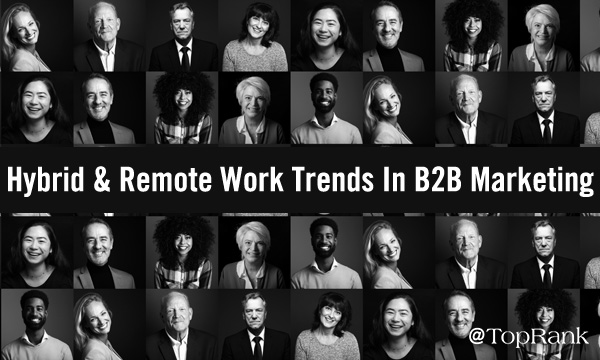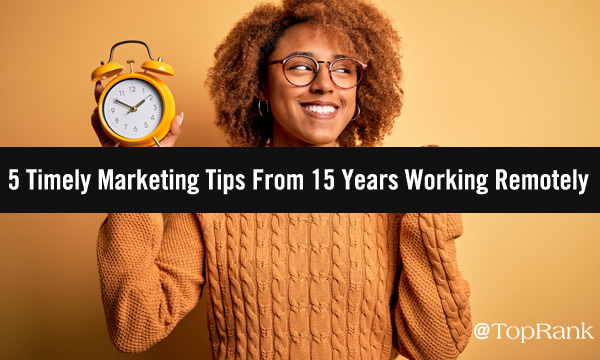Hybrid & Remote Work Trends That Will Alter The Future Of B2B Marketing

By Lane Ellis

How is the shift to remote and hybrid work affecting B2B marketers?
Which trends will endure in the post-pandemic marketing landscape?
The dramatic shift to hybrid and remote work that has been brought about by the pandemic is set to forever alter the way B2B marketers and the organizations they work for and with do business.
Let’s take a look at some of these changes, and the trends that are likely to permanently affect B2B marketers, and I’ll offer my own perspective coming from a long-term background in remote work.
Flexibility: Remote & Hybrid Options May Come Permanent
On Monday, March 23, 2007 I started my life of working remotely — a process I wrote about last year as the pandemic first began forcing much of the workforce into unfamiliar remote work situations. In “Day 4,777: Remote Work Tips From 13+ Years As A Distance Marketer,” I looked at how B2B marketers can thrive in the new era of remote work, and offered a variety of tips I’ve picked up during my time as a remote worker.
Since then a great deal has changed in the world. I’m up to 5,106 days of working remotely, and what was once a tiny segment of the workforce has over the past year grown to encompass a massive swath of workers worldwide, including those working in the B2B marketing industry.
Leaders at organizations worldwide have shifted from what had been seen as a temporary emergency move to remote work, to implementing permanent and fundamental changes involving remote and hybrid work variations.
[bctt tweet=”“It’s a very interesting time for the history of work, not even just the history of remote work. I think fundamentally work is going to change, and it’s never going back to the way it was before.” — Liam McIvor Martin @vtamethodman” username=”toprank”]
A Convergence of Forces is Driving Remote Worker Relocation Options
This hybrid and remote work sea change has also had far-reaching and sometimes unforeseen implications. Workers in major metropolitan centers have come to realize that they’re no longer necessarily required to be tethered to a particular work location, and not just within their city, as growing numbers of professionals are leaving cities such as San Francisco and New York for locations that are a world away — and not only in size and cost-of-living.
This week CNN’s John D. Sutter explored the phenomenon from a climate change perspective, in “As people flee climate change on the coasts, this Midwest city is trying to become a safe haven,” another factor that has coincided with the pandemic to fuel a new era of remote and hybrid work options.
The safe haven city Sutter’s piece focuses on is Duluth, Minnesota — which happens to be my home of the past 26 years. The city of 86,000, a few hours north of Minneapolis, is where I’ve worked remotely for some 14 years now. My wife Julie and I live …read more
Source:: Top Rank Blog








